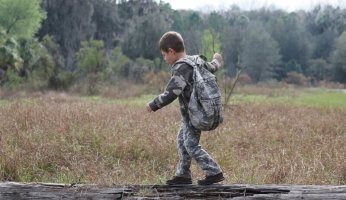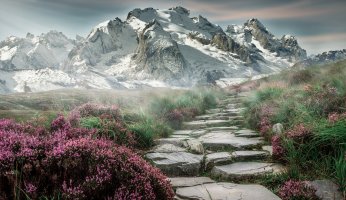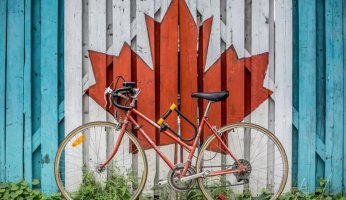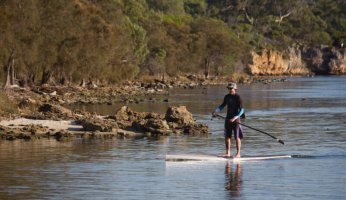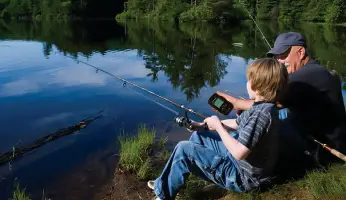10 Tips For Hiking in Hot Weather
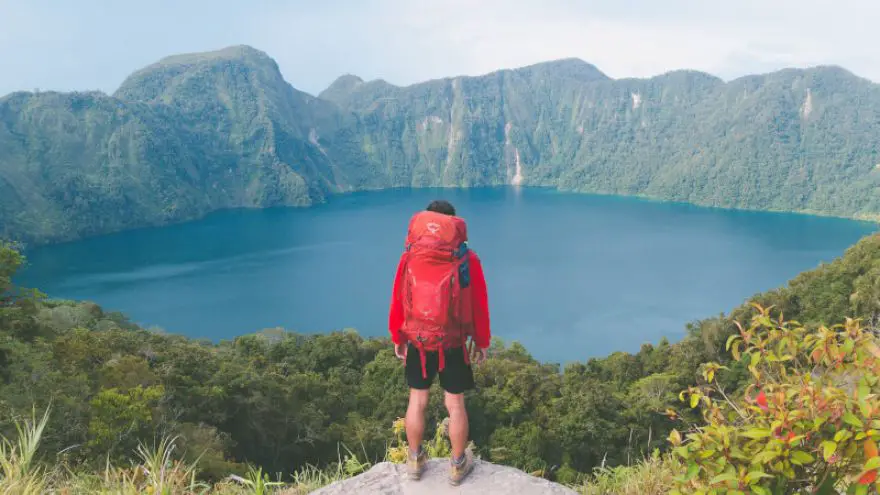 10 Tips For Hiking in Hot Weather
gearweare.net
10 Tips For Hiking in Hot Weather
gearweare.net
Clear sunny skies on those long summer days. You are hiking a new nearby trail as the temperatures reach triple digits. The plants struggle to stay green as the sun shimmers down on the dry ground around you. With no shade in sight, you start to crave some water to quench your thirst. Image the feeling of a cold burst of water you grab for your canteen. Luckily for you, planning was the best move you made today. It is possible to enjoy the outdoors in the brutal summer heat. Continue reading for the top ten tips for hiking in hot weather.
Table of Contents
HYDRATION
First and foremost, probably the essential aspect of any outdoor excursion. Staying hydrated. Hydration is key to every successful outdoor adventure, especially in hot weather. With your body burning roughly 1 liter of water per hour while hiking keeping the water flowing is imperative. If you need a sound water filtration system check this one. Here are just a few tips on how to stay moving while in the hot weather.
- Overcompensation is key. You should always try to bring more water than you plan to consume.
- Chugging water to quench your thirst is not helping. Your body can only process about half a liter per hour effectively. Sipping regularly can help your body stay hydrated more efficiently.
- Stay focused. You need to pay attention to your body. If you are experiencing dry mouth, sleepiness, and fatigue or feeling lightheaded with extreme thirst, chances are your already dehydrated.
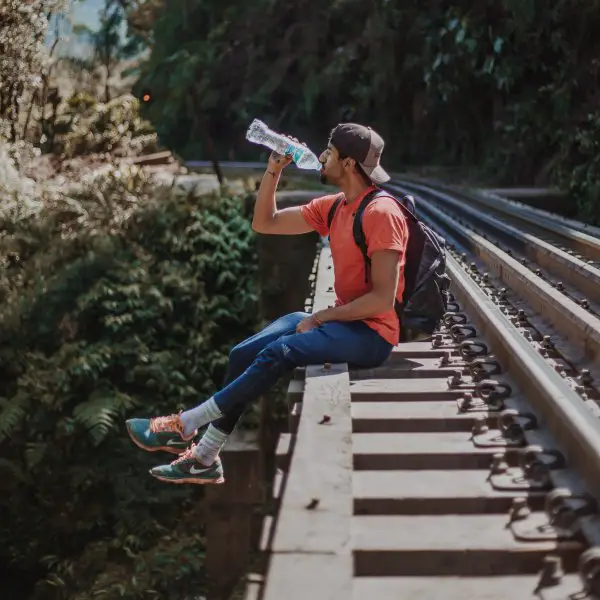 COVER UP
COVER UP
When the weather gets hot, and you start to sweat, dropping layers to cool off seems like a viable option. But in the blistering heat not so much. Protecting your skin is just as important as staying hydrated. Prolonged exposure to the sun can give you sunburn and, in some cases, can lead to skin diseases such as Melanoma. Don’t worry, though; we have a few ideas to help beat the heat.
- Wear long sleeves. Loose-fitting longer sleeves are your best friend in hot weather. They protect you from the heat and allow for proper ventilation. Read our guide on the best shirts for hiking. It offers some great options.
- Cover your head. Wearing a lightly colored hat to reflect the sun and a pair of sunglasses can go a long way. Keep your head fresh so you can stay cool yourself.
- Apply sunblock. There is no shame in protecting your skin with sunscreen. Make sure to apply to areas that will experience prolonged exposure to the sun.
- Synthetic fabrics help. Materials designed to allow your body to breath while providing protection are always a great way to keep you moving.
- Wicking socks are the real thing. Keeping your feet dry and preventing blisters is essential. Wool is naturally antibacterial most recommended as the way to go when deciding what material to wear.
SALTY CARBS
Electrolyte tablets are important. Sodium, potassium, calcium, chloride, phosphate, and magnesium are all electrolytes. Keeping your body full of them is essential. Probably the most critical ingredients your body will need to stay fueled. Complex carbs are going to be your best friend when on a prolonged trek in the blistering heat. Try to stay away from simple carbs like candy or sugary drinks. Here are a few options for your on the go snacks that will help you stay hydrated.
- Trail mix. This sweet-salty mix is an excellent combination of all the essentials.
- Energy bars. These bad boys are small and pack a punch — an effective way to pack light and eat a substantial snack.
- Some fruit is also a good source of complex carbs and sugars. It’s a great source of energy to keep you feeling tip-top as well.
- Electrolyte drink mixes are an excellent way to go. Small and efficient, you can stay hydrated and keep your body happy.
- If the above is not enough, maybe you can check the great selection of the best backpacking meals.
WHEN TO HIKE?
For the intelligent hiker who wishes to utilize time itself to maximize the enjoyment of a hike. Picking a proper time to hike is always essential. But taking it one step further and trekking during optimal times are a critical aspect some people never even think of. The sun is usually at its hottest from 11 am to 3 pm. Here are a few thoughts on how you can optimize the quality of your outdoor excursion.
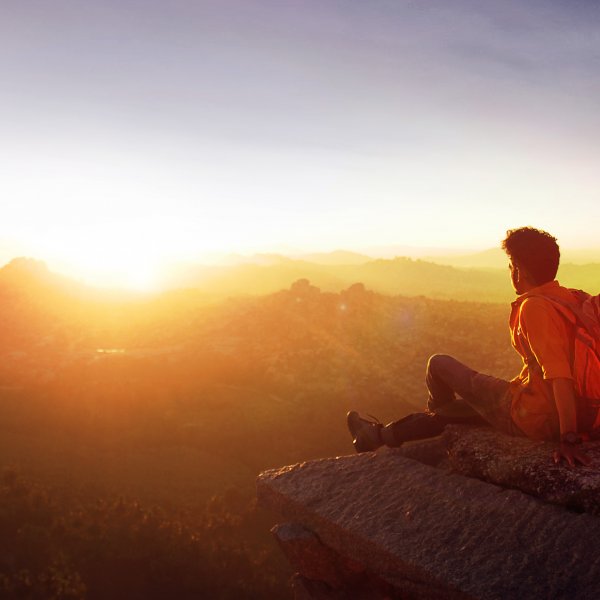
- Get an early start. There are no rules against being an early bird. If you know it is going to be hot, then beat the heat and start before the sun gets too hot.
- Get a later start. If you know that it is going to be a milder tempered in the afternoon, then having patience can help. Wait till the sun cools off a little bit and go out afterward.
- If you are looking for a different perspective of scenery, then you may enjoy a night hike. To alleviate the summer heat, try connecting with the outdoors after the sun goes down. Make sure to bring a flashlight.
WHERE TO HIKE
Not only when, but where? Picking the destination as well as the time are a pair decision. The goal can significantly affect just about every aspect of your outdoor adventures. Choosing a hike that can help you beat the heat will be one of the most grateful decisions you’ll make on your behalf. Here is just another aspect of planning.
- Choose a shaded trail. Picking an adventure that keeps you fresh with vegetation or even canyon walls is a good idea. Why be exposed to the sun when you don’t have to.
- Try hiking near water. Sometimes a fresh lake or ocean breeze can a wondrous experience in the heat.
- Try walking trails that run along a river or stream. A great way to cool off is by draping a wet bandana or hat over your head to keep you fresh. You can also try one of the best headbands that can serve the purpose.
SLOW DOWN AND REST
Taking a break is always important. Especially for those who enjoy going the distance and make a whole day out of your adventure. It’s essential to make sure you will make it to the finish line. When the weather conditions are not in your favor, it’s smart to keep your body in shape, so you’re not strained by the heat. This will help you stay fit so you can continue hiking with a calm sense of mind. But how you ask? We have a few ideas in mind.
- Rest often. Taking a 30-minute break to regain your strength is always a great idea. Don’t be afraid to stop every few hours for enjoying the scenery and relaxing.
- Stay cool. When it’s time to stop and rest, look for some shade. Sit down and relax your feet in a shaded area so you can cool down and catch your breath.
- Slow your pace, and it’s not a race. The idea is to enjoy yourself, so make sure you’re moving at a pace that is equivalent to that.
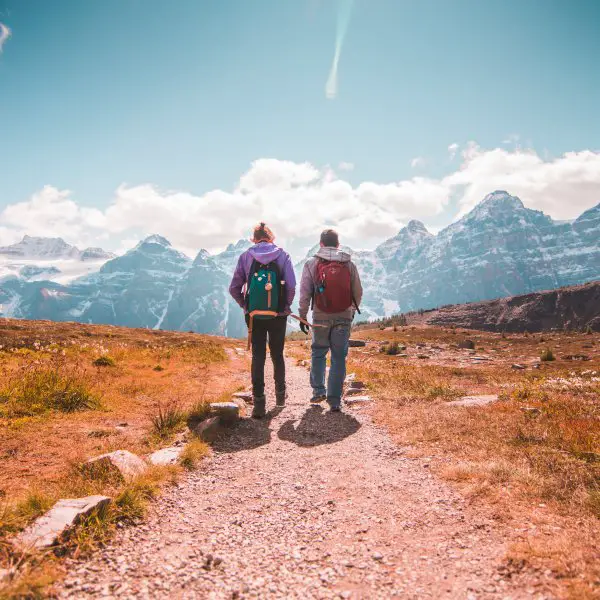 PRACTICE BROMANCE
PRACTICE BROMANCE
Sometimes heat exhaustion can be hard to diagnose, especially when you’re on your own. Becoming self-aware of your symptoms is the first step in preventing issues. An excellent way to combat these problems is not to do it alone. Find a friend you can vibe with and bring them along for your outdoor adventures. Having a reliable friend when the extreme heat is persistent can be a lifesaver. Its never a bad idea to not be alone, and always a great idea to keep an eye out for your buddy.
HEAT EXHAUSTION
After several hours in the sun, pushing yourself can come at a price. After your body becomes worn out, you will start to realize it. When you lose the ability to cope with the stress of the heat, exhaustion will soon follow. But understand the situation and how to correct it will be the difference between your bed and a hospital bed. Some treatments for heat exhaustion are as follows.
- Retreat from the heat. Find a safe, shady area to take a break. Try removing extra clothes when the sun isn’t beating down on you.
- Rehydration! Drinking plenty of water with electrolytes or salt tablets are always a great idea.
- Cooling off will always help. You won’t regret trekking along that river or stream when you need a place to cool off.
HEAT STROKE
That moment when your body overheats. It is a critical condition called Heat Stroke. It is as it sounds. Pushing yourself past your limits can have severe medical setbacks when it comes to your wellbeing. Knowing how to diagnose this problem is just as important as well. If your experiencing any of the following symptoms, then immediate action is required.
- Throbbing https://gearweare.net/review/best-emergency-radios/headache.
- Dizziness and light-headedness.
- Confusion or disorientation
- Anxiety
- Muscle weakness or cramps.
- Nausea and vomiting.
- Rapid heartbeat accompanied by shallow breathing
- Body temperature exceeding 104-degrees Fahrenheit
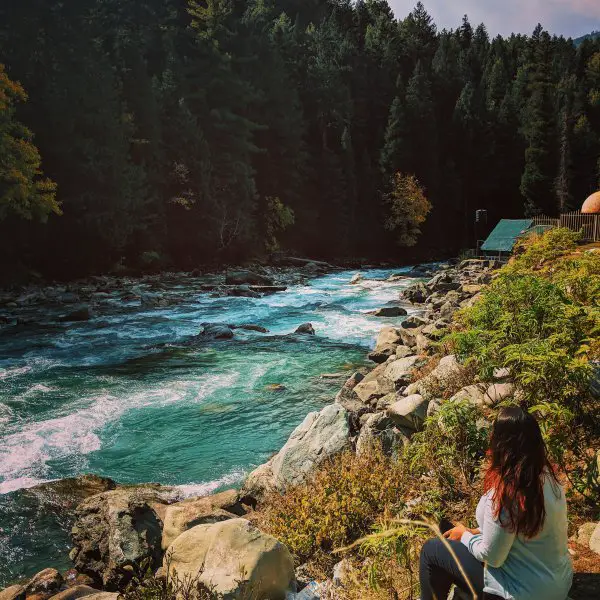 HEAT STROKE TREATMENT
HEAT STROKE TREATMENT
Once you have established the fact that you have pushed your body over the edge, you must act. If your attempts to prevent a heat stroke did not work out as you planned, then the next few steps are the critical ones.
Taking the time to understand the why and how of these types of situations are essential for anyone. Knowingly putting yourself in possible danger for the thrill of an exciting outdoor adventure is one thing. But how you handle it is the part that counts. Treatments for heat stroke are as follows.
- Cool down. Attempting to bring down your body temperature is the most important. When your body is overheated, removing the heat is most certainly step number one.
- Rehydration. Once you have become disoriented, this may not even be something you think of. If you can hold and drink a bottle of water, make sure to do so.
- Evacuate ASAP. Once you’ve overheated your body, the internal organs are now at risk of damage. If you can move, then your next move you should make. Take the individual if it’s not yourself to the nearest hospital for an evaluation if possible.
Now that we’ve given you the top ten tips on how to hike in the heat, the rest is up to you. Remember that preparation is the first step to any outdoor activities. But since you’ve planned, fret you shall not. What do you think? Do you have any possible tips or ideas for our community? Share them below so we can all stay well informed!





